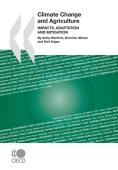This volume examines the experiences of 21 developed and developing countries in adjusting their training provision to meet the new demands of a greener economy. Analysts started by identifying the drivers of transformation to a greener economy – changes in the physical environment itself and changes induced by government regulations, more efficient technologies and changes in consumer demand. Then they assessed the effect of these changes on employment, identifying areas of job growth and of job loss
Only then could researchers start to understand how skill requirements are changing and are expected to change in the future, and to examine how well national training systems are anticipating and responding to these new needs. Their analysis shows that skills development is critical to unlocking the employment potential of green growth, yet skills shortages are becoming an obstacle in realising this potential. The report recommends that countries devise strategies based on well-informed policy decisions, social dialogue, and coordination among ministries and between employers and training providers.

In June 2009, the OECD Council Meeting at Ministerial Level (MCM) adopted a Declaration on Green Growth (OECD 2009a). The declaration invited the OECD to develop a Green Growth Strategy to achieve economic recovery and environmentally and socially sustainable economic growth. The MCM Declaration broadly defines “green growth policies” as policies encouraging green investment in order to simultaneously contribute to economic recovery in the short term and help to build the environmentally friendly infrastructure required for a green economy in the long term. In terms of resource economics, such policies firstly need to guide industry to delink environmental degradation from economic or sales growth by reducing resource use per unit of value added (relative decoupling). At the same time, it would be essential to aim at further efforts towards achieving absolute reductions in the use of energy and materials to a sustainable level (absolute decoupling).
This book presents the research and analysis carried out during the first phase of the OECD Project on Sustainable Manufacturing and Eco-innovation. Its aim is to provide benchmarking tools on sustainable manufacturing and to spur eco-innovation through better understanding of innovation mechanisms. It reviews the concepts and forms an analytical framework; analyses the nature and processes of eco-innovation; discusses existing sustainable manufacturing indicators; examines methodologies for measuring eco-innovation; and takes stock of national strategies and policy initiatives for eco-innovation.
This book draws on work from across several parts of the OECD and explores policy actions for the deployment of new technologies and innovations as they emerge: investment in research and development, support for commercialisation, strengthening markets and fostering technology diffusion. Competition will be essential to bring out the best solutions.
Key findings include:
